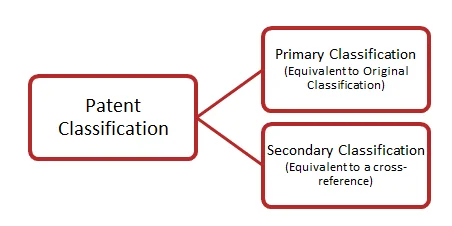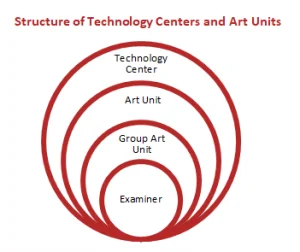The USPTO‘s refusal of patent claims as abstract concepts poses a significant obstacle for innovators heavily committed to Research and Development (R&D) endeavors aimed at protecting their advancements. Addressing this challenge requires a strategic approach, emphasizing meticulous patent drafting. This enables patent drafters to anticipate the particular art unit (AU) tasked with evaluating the application, thereby refining claim scope and increasing the likelihood of approval or a more favorable grant rate, all while minimizing potential complications.
In this article, we delve into an exciting journey exploring the intricacies of patent application drafting, navigating through abstract idea rejection, and discovering the essential elements for safeguarding your innovation with Patent Drafting Catalyst at your service.
Understanding Abstract Idea Rejection
The Manual of Patent Examining Procedure (MPEP) § 2106, a cornerstone of patent laws adhered to by the USPTO, delineates two crucial criteria for subject matter eligibility, which are:
- Firstly, the claimed invention must fit into one of the four categories: process, machine, manufacture, and composition of matter.
- Secondly, the claimed invention must not fall under any of the judicial exceptions, such as abstract ideas, natural phenomena, or laws of nature.
Abstract ideas, categorized among the judicial exceptions, are further subdivided into mental processes, mathematical concepts, or methods of organizing human activity, according to the 2019 Revised Patent Subject Matter Eligibility Guidance (2019 PEG).
Despite variations in the frequency of abstract idea rejections across different art units, the USPTO follows a consistent 2-step process, often referencing previous court cases to justify rejections. While not all reasoning may align with applicants’ perspectives, having a rationale to engage with is essential. Furthermore, some examiners actively seek and suggest materials within patent specifications that attorneys can leverage to overcome abstract idea rejections.
Exploring Patent Classification & Technology Centers
A notable shift occurred in Patent Classification on January 1st, 2013, as the United States Patent and Trademark Office (USPTO) replaced the outdated United States Patent Classification (USPC) system with the modern Cooperative Patent Classification (CPC) system, developed jointly with the European Patent Office (EPO).
Within the CPC framework, patent applications undergo categorization into primary and secondary classifications, focusing on their fundamental innovative concepts, with claims serving as guiding criteria. This classification process facilitates the assignment of art units (AUs) tasked with reviewing applications within specific technical domains.

After submission, a non-provisional application is categorized into predefined groups. Subsequently, an art unit corresponding to that group is assigned to oversee the examination process. Several factors, including technological considerations, influence the allocation of these classifications, rendering the assigned category and art unit somewhat predictable.
Within the USPTO’s technology centers, specialized examiners are organized into AUs devoted to assessing patent applications within specific scientific or technical domains. These AUs are further subdivided into group art units (GAUs) and play a crucial role in evaluating patent applications and determining subject matter eligibility. Familiarity with the organization of technology centers, AUs, and GAUs enables applicants to strategically navigate their patent applications for optimal evaluation, thereby expediting the examination process.

Tailored Strategies for Drafting Patent Applications
The success rate of patent applications can be significantly influenced by the varying attitudes of examiners in different art units towards rejections based on abstract ideas. Post the 2019 PEG, there has been a noticeable improvement in grant rates in several art units, especially those related to hardware and non-business domains. However, some art units continue to uphold strict standards for patent idea subject matter eligibility, creating hurdles for innovators seeking to protect their inventions.
To overcome these obstacles, experts recommend a strategy known as “Targeted Patent Application Drafting.” This proactive approach involves anticipating the preferences of specific art units during the claim drafting process. The goal is to align application claims and scope with art units that are more likely to grant patents, thereby reducing the risk of rejection and increasing the chances of successful patent prosecution.
Approach for Targeted Patent Application Drafting
The key to navigating the complexities of patent prosecution lies in crafting a strong patent specification. Patent practitioners should draft with foresight, anticipating potential rejections based on abstract ideas. They should also ensure their specifications are equipped to effectively address any office actions or abstract idea rejections. If the specification fails to highlight the technological advancements inherent in the alleged abstract ideas, mere responses to office actions may not suffice. A well-supported specification can lend credibility to arguments, often positively influencing the examiner’s evaluation.
In cases of repeated rejections based on abstract ideas from a specific art unit, it may be wise to adjust the scope of claims to target a different unit that is more inclined towards granting patents. This can be achieved by filing a continuation application with a revised scope of claims aimed at a specific art unit with a higher grant rate. However, this strategy is only effective if the specification has been meticulously fortified with sufficient evidence to support the arguments presented in response to office actions.
The Distinctive Approach of Patent Drafting Catalyst for Patent Application Drafting and Prosecution
At Patent Drafting Catalyst, we offer patent drafting service designed to help businesses reduce costs and speed up the patent examination process for swift approval. Our services are tailored to help businesses streamline costs and accelerate the patent examination process, facilitating swift approval. With our expertise, we strategically navigate patent applications towards the most favorable art units, thereby maximizing the likelihood of success. Our seasoned team of patent drafting professionals not only meets patent office requirements but also ensures comprehensive coverage of innovative concepts, optimizing the scope of protection. By collaborating closely with subject matter experts, we guarantee the accuracy and completeness of patent applications from all angles.
Closing Thoughts
As we approach the end of our discussion, the path to patent approval becomes increasingly clear. It’s crucial for patent drafters to anticipate the art unit and avoid those with low grant rates during patent application drafting. This strategy can help reduce prosecution costs, secure early grants, and avoid patent idea rejection. Additionally, patent applicants can consider directing their application to a different art unit through a continuation application with a different scope of claims.
At Patent Drafting Catalyst, we specialize in offering patent drafting services meticulously crafted to optimize the grant process and minimize expenses for businesses. With our extensive experience collaborating with multiple patent attorneys, we remain continuously updated on industry best practices for patent drafting. Our team comprises experts in various technology domains, ensuring top-notch patent application drafts even for cross-domain inventions. We’ve witnessed a notable reduction in office actions when patent attorneys prosecute our drafts. Many of the patents we’ve drafted have successfully been enforced against infringers, earning us trust, appreciation, and repeat business.
